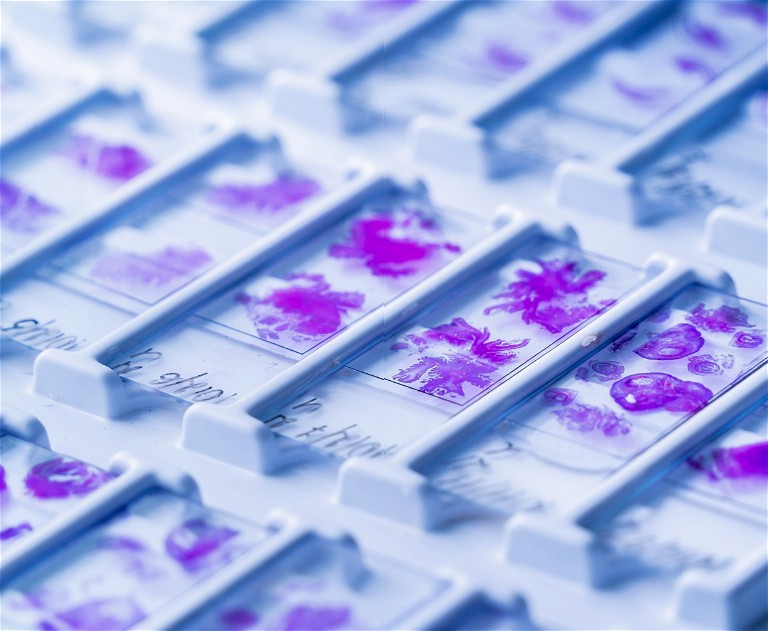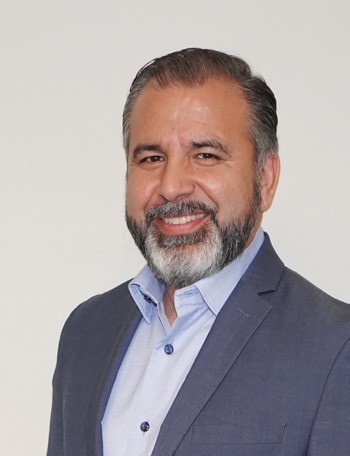Analysis: Cell Analysis
Real time cell analysis
IPT talks to Yama Abassi at Agilent about immunology and cell analysis and how these will develop in the future
IPT: How has the immuno-oncology evolved in the last decade?
Yama Abassi (YA): The start of the modern and emerging field of immuno-oncology can be traced back to the US Food and Drug Administration (FDA) approval of the first immune checkpoint inhibitor, ipilimumab, back in 2011. Since then, a number of immuno-oncology therapies based on different modalities have been approved by the FDA, which collectively has ushered in a new era of cancer treatment. These new treatments have already become standard of care for several different types of cancer indications.
One of the most exciting therapies to emerge within the last seven years is adoptive cell-based therapies based on engineered immune cells and better known as chimeric antigen receptor T-cells. There are now six FDA approved autologous CAR T treatments targeting tumours of haematopoietic origin. Additionally, continued improvements in targeted cell engineering techniques such as CRISPR/CAS have enabled the development of allogeneic CAR T, which while still in experimental stage, holds enormous promise in terms of scalability and cost.
IPT: Can you highlight the biggest need or gap for more effective cell-based therapies that target solid tumours?
YA: The six FDA-approved CAR T therapies are primarily approved for tumours of haematopoietic origin. While there is considerable ongoing effort, there is no FDA-approved CAR T therapy for solid tumours, which constitute more than 90% of all cancers. There are a few reasons why it has proved challenging to develop CAR T therapies against solid tumours. These include the lack of identification of specific targets expressed only on tumours and not occurring in normal tissues, the heterogeneity of the tumour, the immunosuppressive tumour microenvironment, lack of persistence of CAR T-cells and last but not least trafficking and infiltration of the CAR T-cells to the tumour site.
Collectively, each of these topics needs to be individually addressed in order to develop more effective therapies. There is some interesting work being done to target tumour-associated antigens using the CAR T approach that could address the target specificity issue. In addition, CAR T-cells targeting multiple tumour antigens are also being considered. CAR T-cells expressing accessory proteins such as cytokines that can facilitate CAR T homing to tumour sites is also another approach that is under investigation.

IPT: What would you say is the biggest (critical) need in the field from a manufacturing and regulatory perspective, and how can we improve or address key challenges specifically?
YA: Despite all the excitement surrounding CAR T treatments, there are a number of formidable challenges facing the field including: continuing to improve the efficacy and persistence of CAR T therapy; minimise the long manufacturing durations, improve understanding and measurement of critical quality attributes of the CAR T-cells; lowering the cost of treatment and development of more efficacious CAR T-cells for targeting solid tumours. Solid tumours constitute more than 90% of all cancers and there are various factors including the immunosuppressive tumour microenvironment, the heterogeneity of the tumour population and the infiltration and trafficking of the CAR T-cells to the tumour site, which collectively makes it challenging to develop efficacious CAR T therapy. It is imperative that we continue to improve on our understanding of tumour biology and its interaction with the immune system in order to develop more efficacious CAR T therapies against solid tumours.
IPT: With immunology and immune-based therapies on the rise to target and effectively treat human pathologies such as cancer, what shifts in the market do you see and how can we home in on more robust assays and workflows to meet the demands of discovery, process development and manufacturing?
YA: Interesting shifts in the field address some of the current limitations of CAR T. One of the major challenges in the field is the vein-to-vein time, which can take anywhere from 30 to 60 days depending on the protocol and is quite long, especially for patients with refractory and resistant cancers that have exhausted traditional therapeutic approaches and need more immediate access to live-saving cell therapies. Some cell therapy providers are implementing much shorter CAR T manufacturing protocols, like Novartis’ T-Charge platform that aims to maintain T-cell stemness and significantly reduce ex vivo expansion time and also show more durable responses in the clinic.
Another interesting shift in the field is that the number of companies with allogeneic CAR T programmes has risen significantly. Recent improvements in targeted gene- editing technologies such as CRISPR/CAS has provided opportunities for performing multiple edits in order to minimise immunogenicity of allogeneic CAR T products, while continuing to improve the efficacy. A third interesting trend in the field is the utilisation of cell sources other than T-cells. For example, natural killer (NK) cells, which are a major component of the innate immune system, offer certain advantages that makes them a more optimal cell source for engineering, including minimal immunogenicity and the innate ability to recognise cancerous cells. Induced pluripotent stem cells (iPSCs), which can be differentiated into various lineages such as T-cells and NK cells are also increasingly being considered as a cell source for CAR engineering.
With diversification of the CAR engineering approaches and cell source, an essential consideration is deep characterisation of the cells throughout the value chain of therapeutic development, from discovery to process development and manufacturing. It is vital to select the right matrix of analytical approaches and assays that can provide functional and phenotypic information about the cells. For example, cell potency, which is an important critical quality attribute, needs to be implemented as early as possible during development, then qualified and validated for manufacturing and lot release.
Additionally, other assays that may not necessarily be required for QC/release assay but still could provide incisive information that can guide product development, such as cellular bioenergetics metabolism, can also be considered throughout the life cycle of CAR T development from sourcing the cells, evaluating engineering strategies and optimising critical process parameters impacting ex vivo expansion of the cells.

IPT: What are the current gaps in analytical assessment of CAR T cells during development and how can analytics be implemented more efficiently to develop better CAR Ts?
YA: A significant extent of CAR T therapy involves ex vivo manipulation steps such as cell purification, activation, gene delivery − viral and non-viral approaches − cell expansion, cell harvest and formulation, therefore it is imperative to implement the right cellular analytical approaches to ensure product quality. Most CAR T development and manufacturing processes rely heavily on assessment of cell count, cell viability and, to some extent, cell phenotype. While these are important parameters, additional assays and analytics relating to cell function should be considered. One of the key parameters impacted by the CAR and or any accessory genes is the metabolic state of T-cells. T-cells undergo metabolic reprogramming upon activation, and because the signalling domain of the CAR mimics T-cell receptor signalling, it can impact the extent of metabolic reprogramming of the T-cells and ultimately how the T-cell produces ATP (adenosine triphosphate), either through aerobic glycolysis, mitochondrial respiration, or a combination of the two ATP-producing pathways referred to as metabolic poise.
It has been shown that T-cells expressing CARs with 41BB signalling domain tend to have a metabolic poise favouring mitochondrial respiration and differentiation of T-cells into a memory phenotype, whereas T-cells expressing CARs with CD28 signalling domain tend to use aerobic glycolysis and differentiate into effector phenotypes. This type of information can ultimately provide insight regarding the persistence of T-cells. Additionally, other real-time imaging assays, like impedance-based technologies, which can provide insight into the dynamic nature of CAR T interaction with tumour cells, can also be highly informative in designing more potent, efficacious and safe CAR Ts.
IPT: What is the future outlook for adoptive cell therapies in the next decade?
YA: The CAR T field is rapidly evolving and there are several promising approaches that can propel this field as a standard of care for various types of cancers, including solid tumours.
Within the next decade we will most likely see strides in in-vivo gene delivery techniques that can eliminate the entire ex-vivo expansion step of CAR T-cells and using the body as a natural bioreactor for expansion of CAR T-cells. The emergence of allogeneic CAR T-cells is another exciting area that promises to deliver results. The combination of CAR T with other therapeutic modalities such as immune checkpoint inhibitors will also be an interesting area to watch for progress within the next decade.
Additionally, therapies based on CAR expression in NK cells and other types of immune cells hold significant promise and we should see some approved therapies within the decade. The implementation of in-process analytics during cell therapy manufacturing will also be critical for developing safe and efficacious therapies within the next ten years.

Yama A Abassi at Agilent received his undergraduate degree in biochemistry with Honours from SUNY/Stony Brook in May of 1992 and a PhD degree in Molecular, Cell and Developmental Biology from the University of California at Santa Barbara in 1999. Dr Abassi joined the Burnham Institute for Cancer Research as an NIH Postdoctoral fellow in 1999 and performed his research on understanding the molecular and genetic basis of cancer. His research was published in several peer-reviewed and internationally recognised journals.